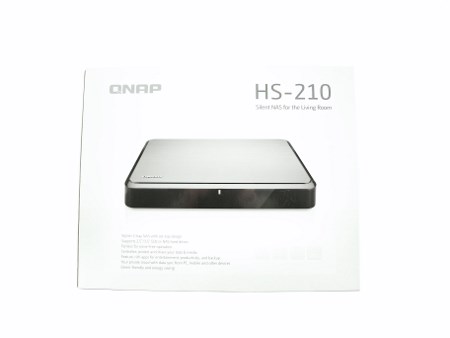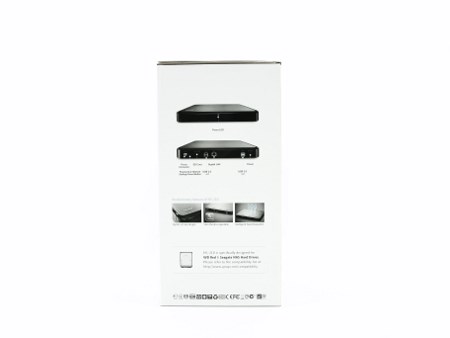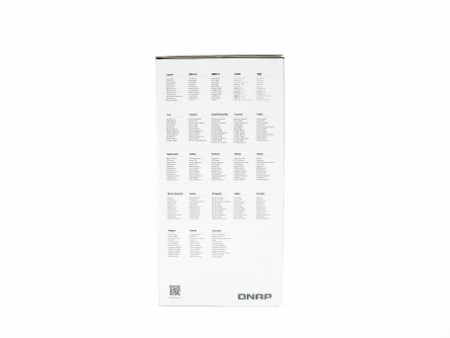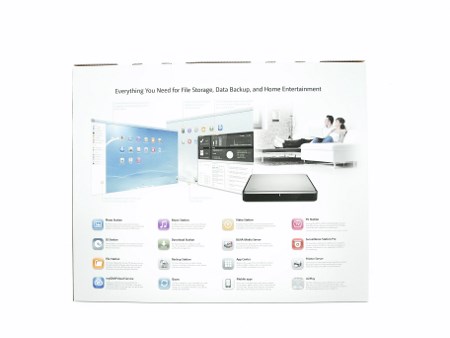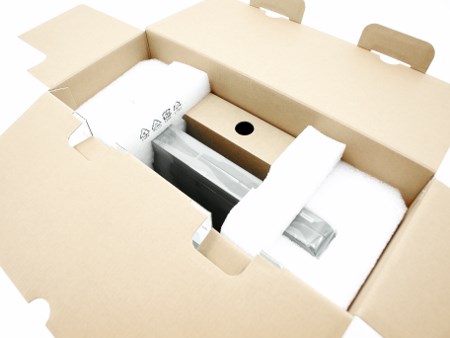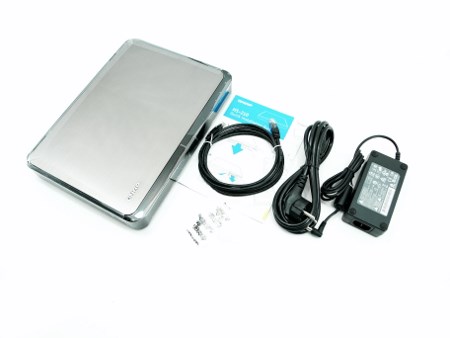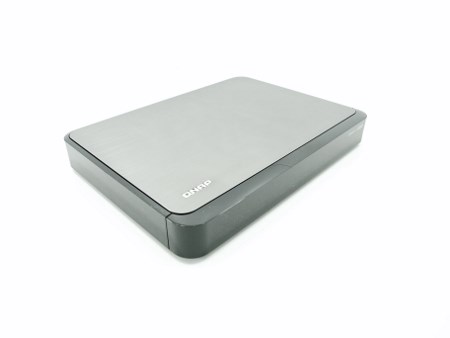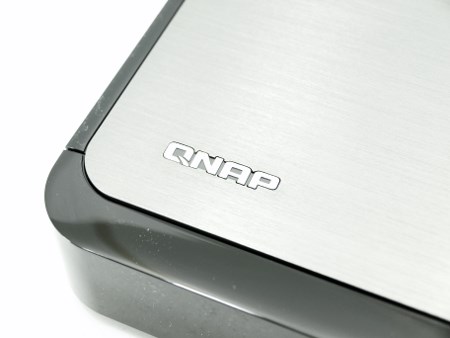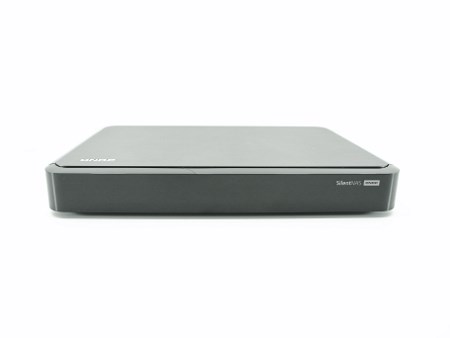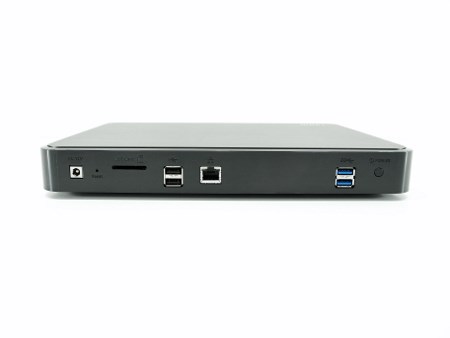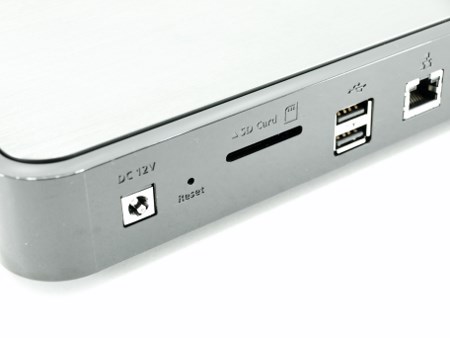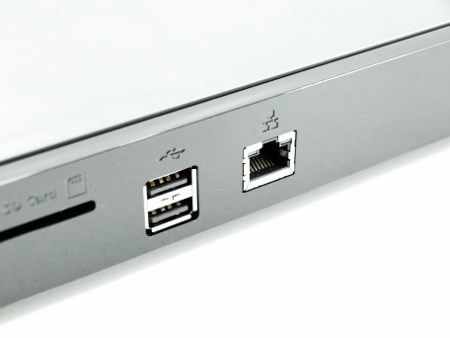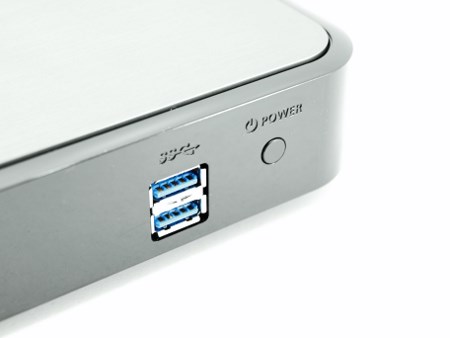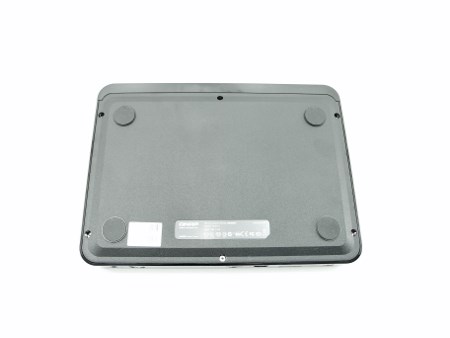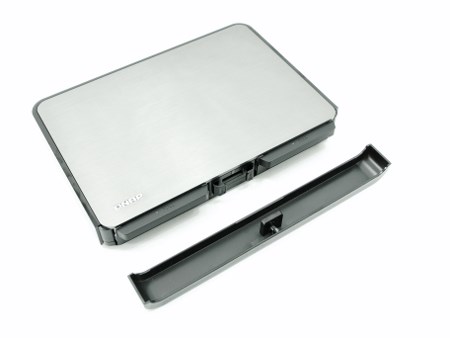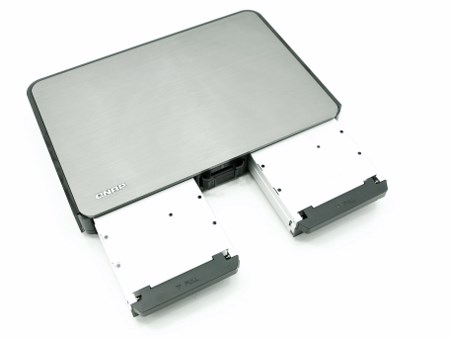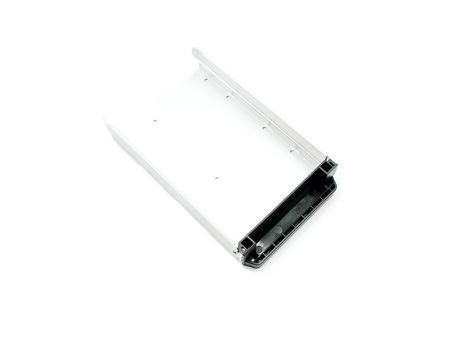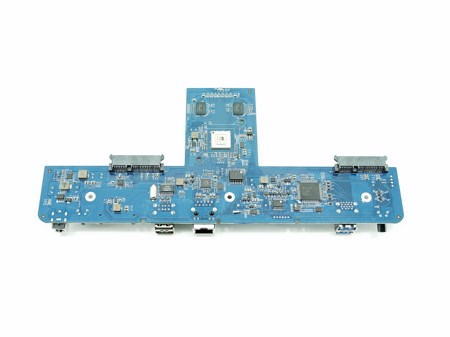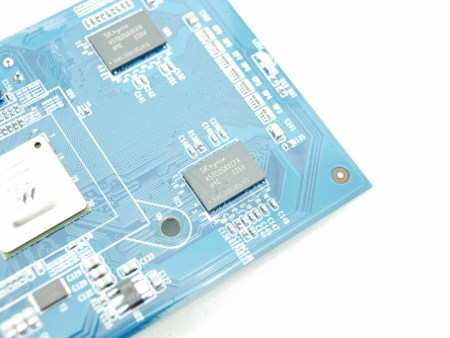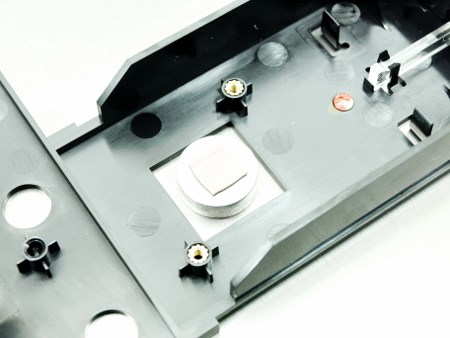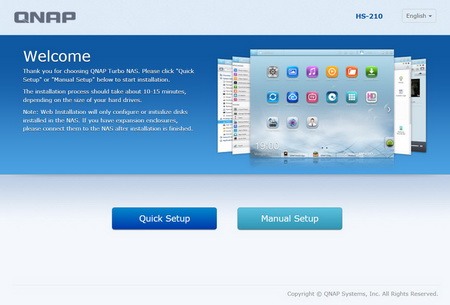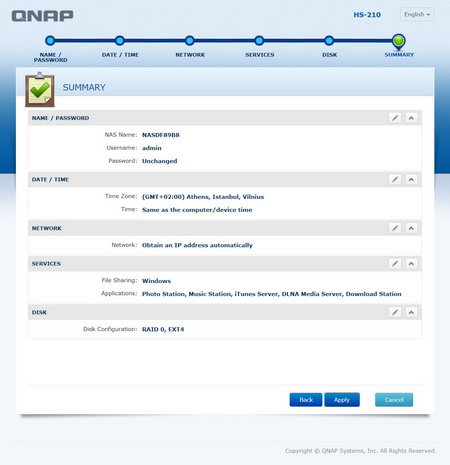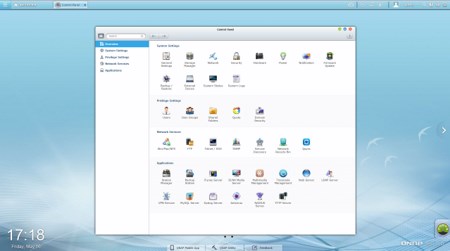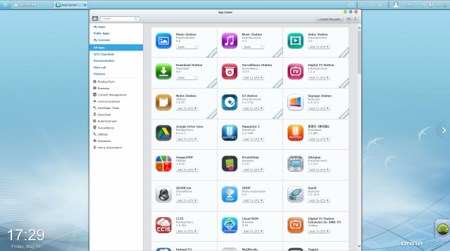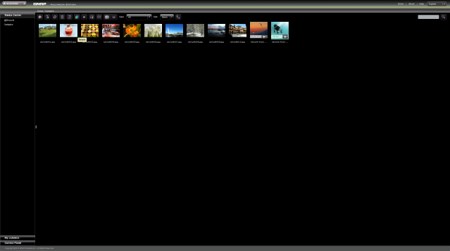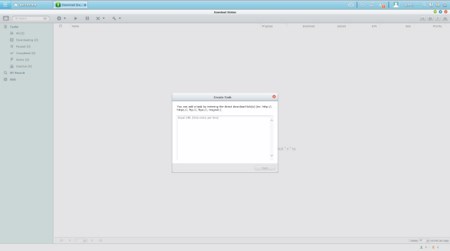INTRODUCTION
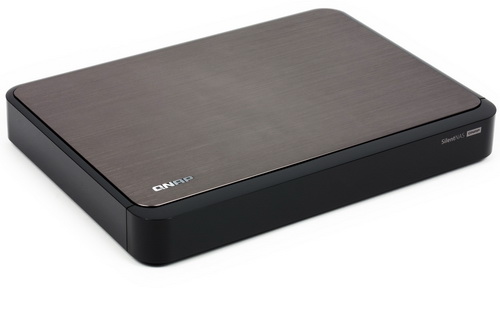
Judging by sales numbers around the globe it seems that NAS servers have finally managed to replace full computer systems in some areas due to their size, low power consumption and easy to use menus and functions. This of course applies mostly to large enterprise environments where several such devices get used and thus the benefits from the mentioned features are even greater. Small business and home users also turn towards NAS servers to cover their needs (mostly for office use) but to my knowledge at least not many people actually choose to use NAS servers purely for their media sharing capabilities and the ones that do never really place them inside their bedrooms to avoid getting disturbed by their noise levels (even just 20dBA is quite audible at night). QNAP is the first NAS manufacturer to address that issue by releasing the first dual bay model of the SilentNAS series called the HS-210.
QNAP Systems, Inc., as its brand promise "Quality Network Appliance Provider", aims to deliver comprehensive offerings of cutting edge network attached storage (NAS) and network video recorder (NVR) solutions featured with ease-of-use, robust operation, large storage capacity, and trustworthy reliability. QNAP integrates technologies and designs to bring forth quality products that effectively improve business efficiency on file sharing, virtualization applications, storage management and surveillance in the business environments, as well as enrich entertainment life for home users with the offering of a fun multimedia center experience. Headquartered in Taipei, QNAP delivers its solutions to the global market with nonstop innovation and passion.
What really separates the SilentNAS HS-210 from most NAS servers in the market is its design since it's shaped like a DVD player something that was obviously done in order for it to blend in beneath TV sets (set top design). That however is also a downside since QNAP may not have been able to implement a serious passive cooling system something that will obviously disappoint demanding users. Specs-wise the SilentNAS HS-210 packs a Marvell 1.6GHz Processor with 512MB DRAM and 16MB of flash memory so although it uses a passive cooling system the specifications are not half as bad as one would had thought, not for a home oriented NAS unit. The HS-210 also features two USB 3.0 ports, two USB 2.0 ports, SD Card Slot and a Gigabit Ethernet port and yes as you will have noticed already it doesn't feature an HDMI port something that really left us baffled since we are talking about a set top design NAS aimed for people who want to use such a device for media sharing and playback in their homes (more importantly beneath TV sets). That alone steals many points from the SilentNAS HS-210 but there are many things we need to check so without further delay let’s do it.
SPECIFICATIONS AND FEATURES
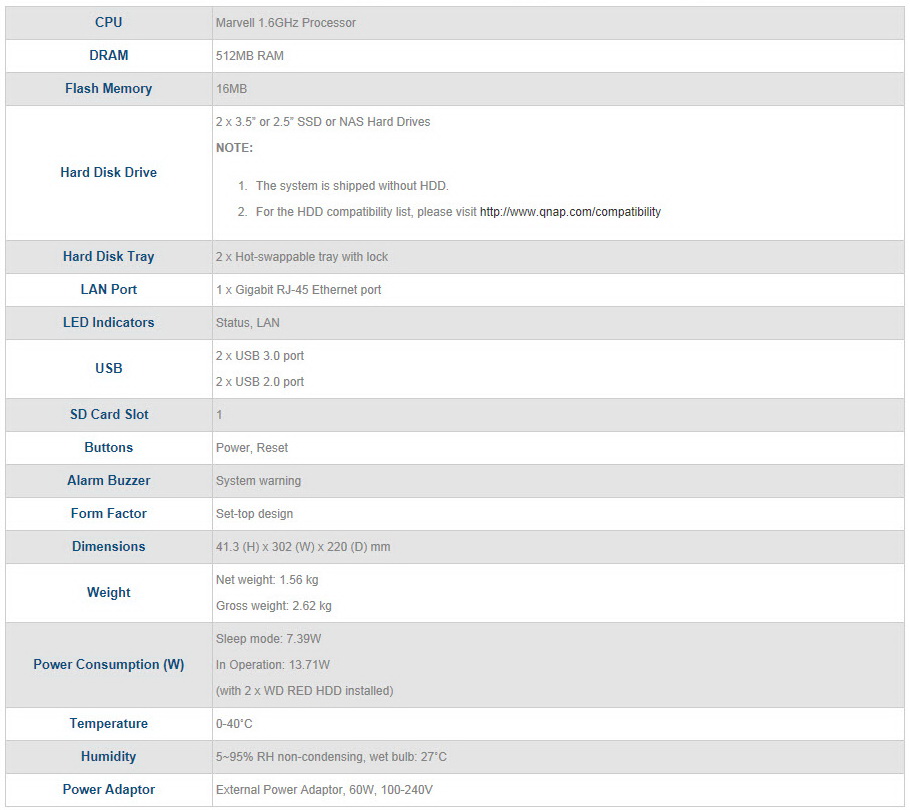

PACKAGING AND CONTENTS
The front of the box has a large product picture and the main product features listed right beneath.
Moving on the left side we see several pictures showcasing the product features and a small text right beneath recommending WD RED and Seagate NAS drives for use with the product.
Some of the software features are listed on the opposite side in 23 languages.
The various stations found in the QTS OS are quickly showcased/explained at the rear.
Once you open the box you will see five 2D barcodes and the social media URLs right beneath them.
While the HS-210 is wrapped inside a plastic bag and sits between two Styrofoam spacers the rest of the bundle is placed inside a cardboard box.
Leaving out the SilentNAS HS-210 you are also getting an Ethernet cable, quick installation guide, AC power adapter and cable and two small plastic bags with mounting screws for 2.5" and 3.5" drives.
THE SILENTNAS HS-210 EXTERIOR
The slim design of the 220mm long, 302mm wide and 41mm thick HS-210 is perhaps even more impressive than its passive cooling system.
QNAP has placed their logo on the far left of the top aluminum cover.
At the front we see a glossy black fascia with the model name on the far right.
Turning the device around we see the DC in port, reset button, SD card slot, 2 USB 2.0 ports, Gigabit Ethernet Port, 2 USB 3.0 ports and the on/off power button.
The device sits ontop of 4 rubber feet which you can remove if you want to further reduce its height (though i don't recommend it).
To access the two drive bays you need to remove the front fascia (it stays in place with the help of a small magnet).
As you can see the drive bays are inverted and so will be the drives once you mount them (that's not really a bad thing).
The trays are made out of aluminum and can hold both 3.5" and 2.5" drives.
THE SILENTNAS HS-210 INTERIOR
You can access the PCB placed in the interior by removing the 5 screws found at the base.
Here we see the Marvell 88F6282 1.6GHz single core Armada SoC CPU by Marvell, 512MB of SKhynix H5TQ2G83CFA 1333MHz RAM and the EJ168 USB 3.0 Host Controller by EtronTech.
As you can see the drives are upside down for a reason and that’s because the CPU needed to face upwards since the top aluminum cover is actually its passive cooling system.
SETUP
Although during the setup procedure you can choose for the wizard to download the latest firmware version on its own i strongly suggest doing it yourself from the official QNAP support page.
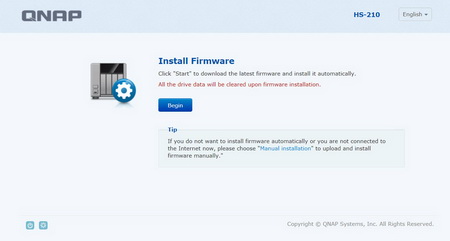
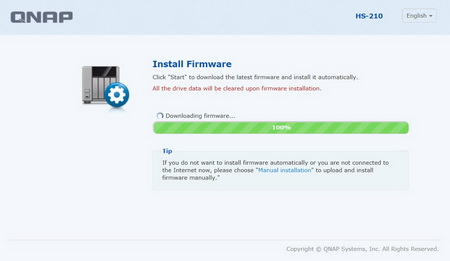
The first screen of the setup wizard gives you the two options mentioned above (we used the auto procedure for a change).
After that you need to choose either the quick setup that makes most changes on its own or the manual one which requires more interaction from your end (as usual we chose the manual setup).
From the above picture you can see the things/settings you will need to configure.
WEB INTERFACE PART 1
This is not our first encounter with the QTS 4.1.0 OS but it's very different in this version mainly since the login screen looks a lot like the PhotoStation.
As always the main tab includes all the icons of the main available/installed stations.
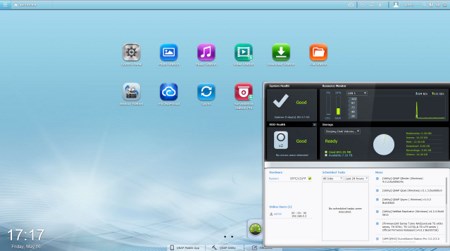

The very good monitor expands from the bottom right of the screen while a quick menu can be accessed from the top left of the screen.
Most functionality is accessible through the control panel of the QTS 4.1.0.
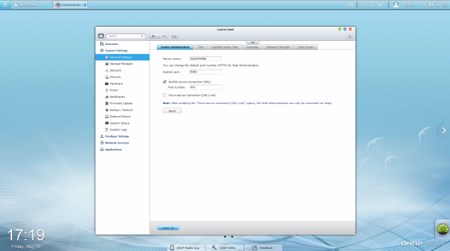
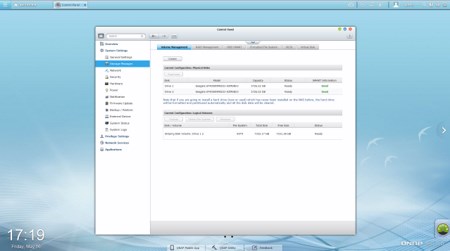
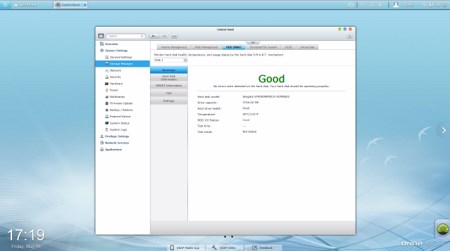
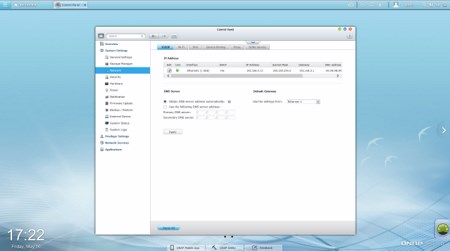
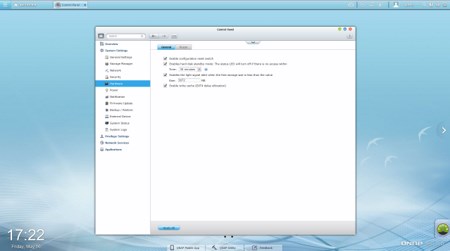

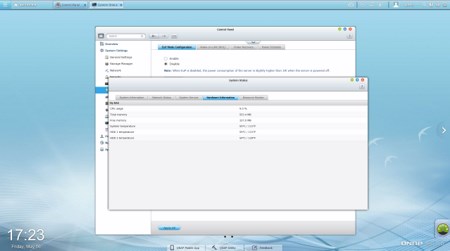
Via the System Settings menu you can set the name for the server, adjust time, set a password, specify your location, adjust the network IP, play around with power options, set notifications, check the state of the installed drives, create RAID and Virtual drives, enable/disable security settings, check hardware information, setup backup options, access external device settings, check the logs and of course perform firmware updates.
The Privilege Settings tab is very basic and allows you to create new users, assign those users to groups, setup shared folders, set specific quotas for each user and configure domain security.
From within the Network Services menu you will find everything network-related including FTP settings, Telnet service settings and service discovery settings. You can also setup/configure the Qsync application which allows you to have your files synced between the NAS and your other internet capable devices at all times.
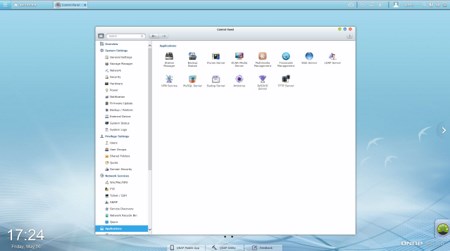

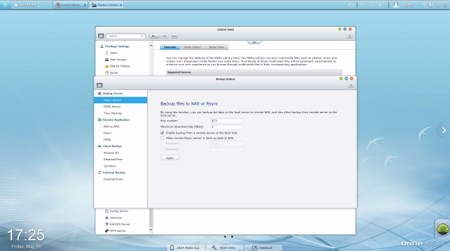
In order to use some of the installed stations including the backup station you will need to enable them from within the Applications tab.
WEB INTERFACE PART 2
The HS-210 has some applications/stations already installed but you can install a lot more from within the App Center.
From within the Photo Station you can see and share pictures on the network.
The Video Station allows you to upload videos to the NAS and afterwards make them available for others to see regardless of their location.
The Music Station allows you to playback your entire music collection without switching to an external application.
You can use the Download Station either to download torrent files or directly from HTTP/FTP.
Once again the File Station allows you to transfer files to and from the NAS and looks quite a bit like the Windows explorer (you can also transfer files from and to the NAS via the normal windows explorer).
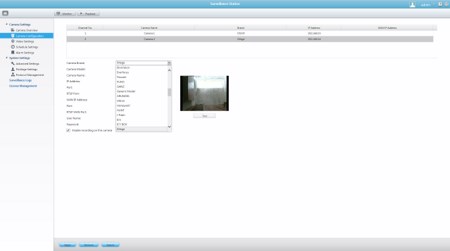
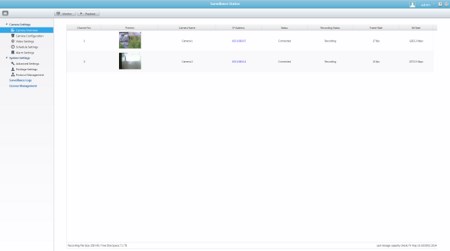
The Surveillance Station Pro remains pretty much the same and you can use it with a total of 42 IP cameras (for some reason Airlive is no longer present thus making it impossible for us to use the recording feature) from a very large range of manufacturers (even if your camera is not present you can use the several compatibility modes). The good news is that by default the application comes with two licenses.
TESTING METHODOLOGY – TEST RESULTS
Since some of the NAS servers/devices we have tested in the past are no longer in our possession (naturally) we will keep performing the exact same testing methodology we did in the past for as long as possible in order to provide accurate comparison results. So as always we will be using Seagate Constellation ES.3 4TB SATA III hard disk drive(s) (in order to also perform RAID tests we were able to switch from the old ES.2 model to the ES.3 since we recorded no differences between them when used inside NAS servers) with the unit at hand and perform several upload/download tests with 10.9GB (Single) and 40,8GB (RAID) files. Tests are repeated a total of 4 times after which we record the average numbers (from the 4 peak ones) into our charts. Finally the network device used is the same Netgear DGN3500 Gigabit ADSL2+ Modem/Router we always use when performing tests on NAS servers.
SINGLE DISK FILE TRANSFER TEST

A single 10.9GB file was uploaded and downloaded to and from all the NAS units in this test. In terms of performance the HS-210 may not be the fastest of the bunch but going up against the AS-202TE by ASUSTOR especially when passively cooled is not a small deal.
TEMPERATURES

Passive cooling has downsides and the temperature of the drives is obviously one of them.
POWER CONSUMPTION

Power consumption is somewhat high for a passively cooled NAS server but nothing we haven’t seen in the past.
NOISE LEVELS

Although the HDDs we used were quite audible when accessed that shouldn’t be so much the case if you decide to use one of the models designed for NAS use (WD Red/Seagate NAS). Since the NAS is passively cooled however we can't register any noise in our charts.
RAID

As you can see our RAID chart is not complete since our 10GBe hardware is still not here. However we have included the results from pretty much all the Gigabit NAS Servers we reviewed in the past and could get our hands on.
CONCLUSION
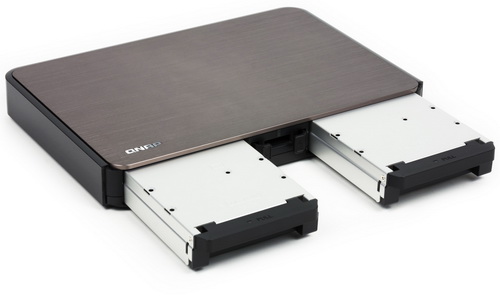
When QNAP told us they were working on a silent passively cooled NAS we were all intrigued although i have to admit that i was a bit more excited than everyone else since i always wanted to have a NAS server inside my living room right beneath my 55 inch TV set. The only two questions i had back then was the how good the HS-210 would be in terms appearance and performance and in both aspects i wasn't disappointed since on one hand it looks like a small DVD player while on the other it managed to get really close to the AS-202TE by ASUSTOR a dual bay actively cooled NAS server. In the end however that mattered very little because QNAP made a single and in my honest opinion unjustifiable mistake (one that i still can't figure out) they didn't add an HDMI video/audio output. Now normally HDMI wouldn't matter very much since i know many people who have virtually no use for one but when you launch a product aimed towards home users and you promote its design and passive cooling by saying that people can place it beneath TV sets inside their living rooms and bedrooms it makes no sense for it to lack an HDMI output. Of course the single core 1.6GHz CPU by Marvell may not be powerful enough to playback heavy media files or perhaps the passive cooling isn't strong enough for that use but regardless of the why QNAP chose that path we all think it's wrong and we hope that they will resolve this in an upcoming revision or a entirely new model. Another problem is the high temperatures of the drives inside and although at 55 degrees Celsius there's little reason to panic still during the summer that number will probably increase and that just might be reason enough for some people to look somewhere else.
QNAP obviously spend quite a bit of time designing the SilentNAS HS-210 to overcome the passive cooling issue and since there's nothing currently in the market with similar features and design it doesn't really come as a surprise that it currently retails for USD287.97 inside the USA (Amazon.com) and 292Euros inside the EU (Amazon.co.uk). The problem with that price tag however is that there are quite a few dual-bay models which are overall better at around the same price point like the TurboNAS TS-221 (no HDMI) again by QNAP or even the AS-202TE by ASUSTOR. Definitely however QNAP deserves credit both for their innovation since that might be the beginning of something really unique (SilentNAS series) and the good performance levels for a passively cooled NAS server and that's why we are awarding the SilentNAS HS-210 with our Golden Award.
 PROS
PROS
- Excellent Build Quality
- Good Performance
- Design (Set Top Design)
- Passive Cooling (Silent)
- 4 USB Ports (2xUSB 3.0 / 2xUSB 2.0)
- Single/JBOD/RAID0/1 Support
- QTS 4.1.0 OS
- IP Camera Support
- Android/iOS Apps
- SD Card Slot
CONS
- Price (For Some)
- Temperatures
- No HDMI Output
